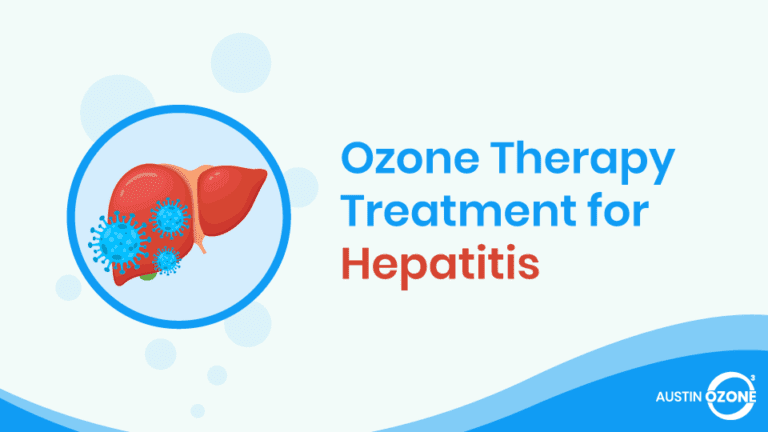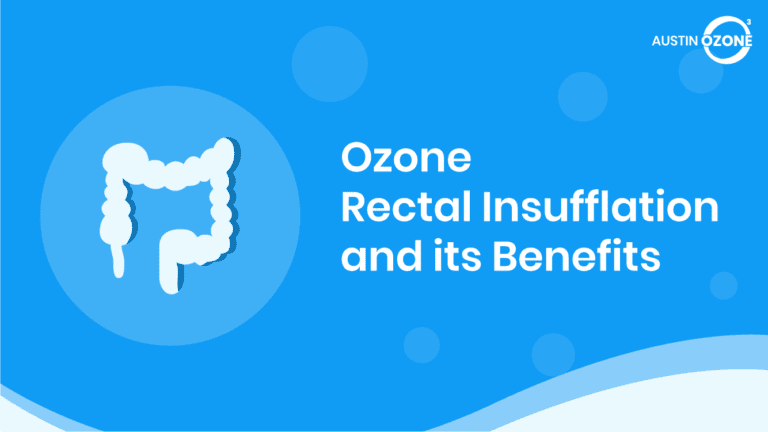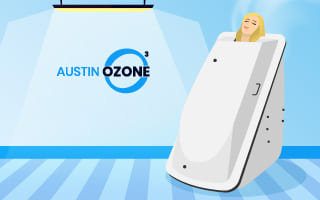Cancer is a large collection of diseases characterized by an abnormal and uncontrollable cell growth that eventually invades or spreads to adjoining organs.
According to the World Health Organization6, cancer accounts for approximately 9.6 million deaths across the globe. The most common types of cancer are breast, colon, cervical, lung, prostate, and lymphoma. Ozone therapy for cancer is considered to be one of best alternative method of treatment.
Overview of Cancer
Cancer3 can grow and spread anywhere in the body. Human cells grow and divide, forming new cells and replacing the old ones that died.
However, when there is an abnormality in the cell process, the diseased or damaged cells refuse to die. This means there is no space for the new cells, which only keep on growing until they form a mass called tumor.
Tumors are either malignant or benign. Malignant tumors can spread or invade nearby tissues or organs.
Tumors are either malignant or benign. Malignant tumors can spread or invade nearby tissues or organs.
Worse, some of these tumors tend to break away from the original mass and travel through the lymph or the bloodstream and form new tumors in other parts of the body. They also tend to grow back even when surgically removed.
Benign tumors, on the other hand, do not invade or spread to other tissues in the body. When surgically removed, they do not tend to grow back. While most are not life threatening, benign tumors can be quite large and can affect your quality of life.
Unlike infections, tumors can use the immune system to survive, spread, and grow. This means that the immune system does not generate the right response to kill cancerous cells.
Schedule an Ozone Therapy Session Today!
What Causes Cancer?
Genetics plays a huge role in the development of cancer. The genes you have inherited from your parents dictate the production of proteins that the cell uses to function. Unfortunately, some inherited genes are more predisposed to developing cancers. For this reason, many doctors recommend genetic testing to determine if a patient has inherited a cancer risk.
Aside from inheriting unique genetic mutations, cancerous cells can be triggered by lifestyle or environmental factors such as exposure to cancer-causing chemicals like nicotine or radiation like ultraviolet rays.
What Are the Risk Factors for Cancer?
Although gene mutation is the common cause of cancer, there are certain factors that can increase the probability of developing this lethal disease.
Age
Aside from family history, age is a factor for many cancer types. Statistics6 show that new cancer cases often involve people aged 65 to 74.
For example, the median age for the diagnosis of breast cancer is 61 years old; for colon cancer, 68 years old; and for lung cancer, 70 years old.
However, this does not mean that young people are immune to cancer. Bone cancer and leukemia are more frequently diagnosed in people aged 20 and below.
Exposure to Cancer-causing Substances
Alcohol intake and cigarette use are often blamed for specific types of cancer (i.e., cancers in the mouth, throat, liver, breast, lung). These substances are said to alter how the cells function and thus, trigger gene changes.
While it is easy to avoid alcohol and tobacco, it is more difficult to prevent complete exposure to cancer-causing chemicals if they are present in the food you eat or the air you breathe.
For instance, aflatoxin is present in most grains and nuts. Luckily, if you stay within the acceptable limits and keep the exposure minimal, there is a high possibility you won’t develop cancer from them.
Bacterial and Viral Infections
Some pathogens can either cause cancer or increase the risk of developing it because some bacteria and viruses are capable of disrupting the signals that are vital for cell growth.
These viruses often enter the body through blood or fluid transmission. Examples of these pathogens are human immunodeficiency virus (HIV), human papillomavirus (HPV), hepatitis virus B and C (HBV and HCV), Epstein-Barr virus (EBV), and the bacteria Helicobacter pylori.
High Level of Hormones
The female hormone, estrogen, has long been linked to certain types of cancer like breast and endometrial cancer1. The increase in hormone levels is sometimes due to hormone therapy.
What Are the Main Categories of Cancer?
There are five major categories of cancer:
- Carcinoma – tumors found in the skin or tissue lining of the internal organs
- Sarcoma – tumors found in the cartilage, fat, muscle, bones, and connective tissues
- Leukemia – tumors found in the blood and bone marrow
- Lymphoma – tumors found in the immune system
- Cancers found in the Central Nervous System
The process of cancer spreading is called metastasis. During metastasis, the cancerous cells split from the primary cell and travel through the lymph system or bloodstream to form new tumors in other parts of the body. Metastasis makes cancer treatment extremely difficult.
One important thing to note is that while cancer is characterized by cellular and genetic change, some tissue changes are not necessarily cancer. For example, dysplasia (buildup of extra cells) is a known precursor to cancer, though early detection and treatment can reverse them back to normal, healthy cells.
Treatment Options for Cancer
Cancer treatment depends on the type and severity of the disease, as well as on the patient’s overall health condition.
The main goal of cancer treatments is to eliminate or totally kill cancer cells without causing too much damage on nearby normal cells. There are three main modes of cancer treatment: chemotherapy, radiation therapy, and surgery.
Chemotherapy
It is the primary treatment offered by medical professionals to totally destroy the cancer cells. Chemotherapy works by immediately targeting the specific area where the cancer cells are growing. It may be administered through various ways, depending on the clinical factors and the patient’s personal preference.
Chemotherapy drugs can be administered either through oral medication, injection, or infusion. It can also be administered intrathecally, intraperitoneally, or topically.
Most of these drugs can result in various severe side-effects, so it is vital that the patient has a serious conversation with their doctor before committing to this type of cancer treatment.
Chemotherapy is also sometimes used to reduce the size of a tumor before beginning another cancer treatment and to relieve the symptoms of advanced stages of cancer.
Radiation Therapy
As the name implies, radiation therapy uses energy such as x-ray to eliminate or reduce cancer cells. It can be used in combination with other cancer treatments (i.e., chemotherapy) and can effectively stop the spread of any remaining cancer cells left by another treatment.
Radiation therapy has the advantage of delivering the optimum dosage of radiation on tumors while leaving healthy tissues and organs intact.
However, like chemotherapy, radiation therapy has its own set of side-effects, which include lymphedema (swelling of lymph nodes), undesirable skin reactions, and excessive fatigue.
Surgery
The surgical removal of cancer depends on various factors including the type of cancer, the size and stage of the tumor, its location, the patient’s age, and their overall health condition and fitness.
Aside from cancer removal, surgery can also serve as a palliative treatment to remove existing obstructions that are causing the patient unbearable pain.
Like radiation therapy, surgery can be combined with other forms of cancer treatment. However, it can also lead to unwanted side-effects that include swelling, infection, lymphedema, pain, and excessive fatigue.
Ozone Therapy for Cancer : Alternative Therapy
Ozone therapy is an alternative method that is being studied as a viable option for diseases like cancer. The process of ozone therapy involves using medical ozone gas, which is generated by running pure oxygen through an ozone generator.
The mechanism of ozone on cancer cells is pretty complex, but ozone basically aims to increase the oxygenation level in the blood to combat the oxidative stress that is usually the culprit in inflammation and tissue injury. It is also said that the increase in oxygen levels will push apoptosis or the removal of cancerous cells.
Just like the traditional cancer treatments, there are various ways to administer ozone in the body. These include insufflation through the ear, rectum, or vagina; infusion of ozonated blood; direct injection of ozone; and topical ozone.
Ozone therapy is an alternative method that is being studied as a viable option for diseases like cancer.
However, the correct administration of ozone to fight cancer wholly depends on the type of cancer and its severity. For some, autohemotherapy seems to be the best option for administering medical ozone to cancer patients.
Although multiple studies4 show positive results in the use of ozone therapy to eliminate cancer cells, more studies are required to fully verify its effectiveness.
Still, ozone therapy offers a safer and non-invasive form of treatment compared to conventional ones. As an added bonus, ozone therapy seems to have an absence of side-effects, although this should also be studied further by experts.
Schedule an Appointment Today
References
- Desaulniers, V. (n.d.). Ozone therapy for breast cancer: It just makes common sense. Retrieved from http://www.breastcancerstudyandsupport.org/ozone.html
- Guggenheim, I., & Ninivaggi, W. (2016, April 13). Ozone therapy for breast cancer patients. Retrieved from http://www.secondnaturecare.com/blog/ozone-therapy-for-breast-cancer-patients
- National Cancer Institute. (2015, February 9). What is cancer? Retrieved from https://www.cancer.gov/about-cancer/understanding/what-is-cancer#:~:text=Cancer
- Ozone Research. (2014, November 28). Ozone therapy breast cancer. Retrieved from http://medicalozone.info/ozone-therapy-breast-cancer/
- Rocky Mountain Saunas. (n.d.). OZONE THERAPY BENEFITS BREAST CANCER PATIENTS. Retrieved from http://rockymountainsaunas.com/pages/ozone-therapy-benefits-breast-cancer-patients
- World Health Organization. (2018, February 20). Cancer. Retrieved from https://www.who.int/health-topics/cancer#tab=tab_1






